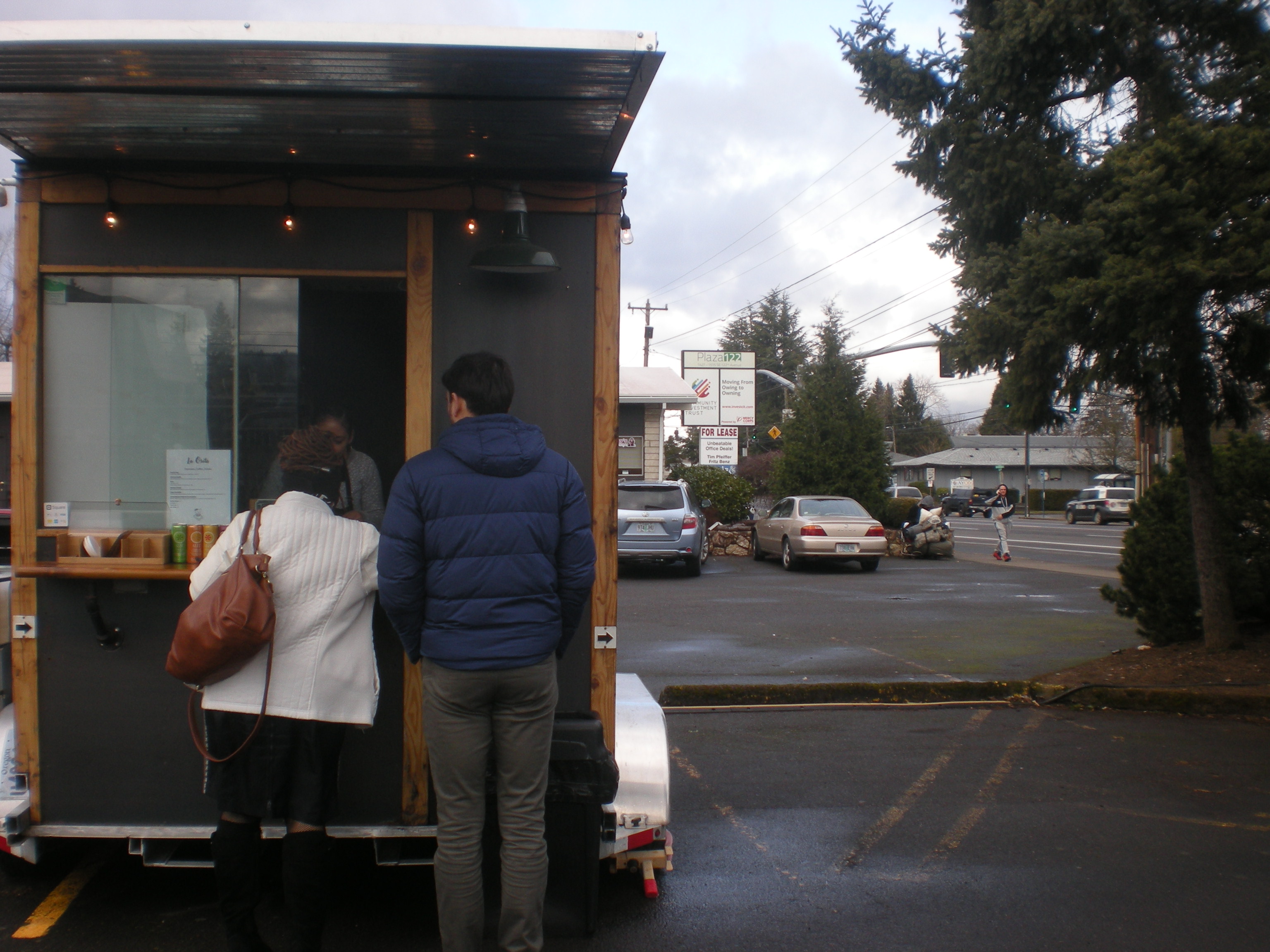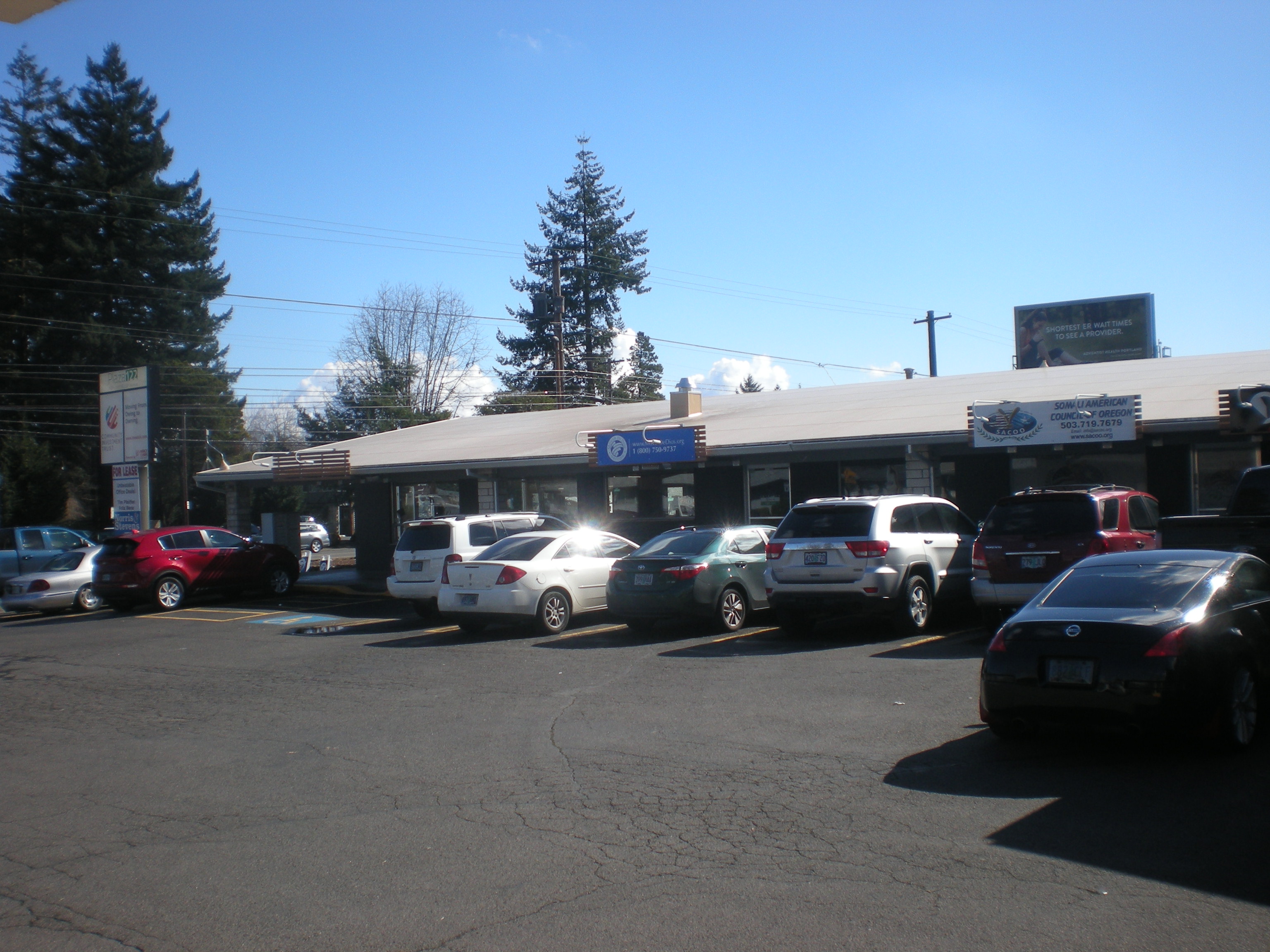Every morning Elizabeth Guerrero starts doling out breakfast burritos and shots of espresso through the window of La Osita. Her food cart sits at Plaza 122, an unassuming strip mall in a part of Portland, Oregon, far removed from the quirky boutiques lovingly satirized in Portlandia sketches.
The storefronts and offices in Plaza 122 reflect the surrounding neighborhood: multilingual tax preparers; the Somali-American Council of Oregon; a Russian lotion shop; a security firm; a cab company; a hair salon.
What isn’t apparent briefly passing by is that Plaza 122 is an experiment that hopes to keep the existing community from being displaced by gentrification. The businesses that operate there are independently owned, but the property belongs to the East Portland Community Investment Trust (CIT). Guerrero, other shop owners, and more than 100 others are invested in the CIT, early adopters of a program intended to help the asset-poor accrue equity and a sense of community ownership.
Recent years of rapid growth have priced many low-income communities out of Portland’s urban core, and now growth is spreading east. A 2018 study conducted by the Bureau of Planning and Sustainability found that East Portland has seen the city’s fastest increase in housing costs, and that more than 14,000 households are cost-burdened, paying over 30 percent of their income on rent.
Local renters now have an opportunity to build equity through Plaza 122. The CIT is run by executive director John Haines and operations manager Sven Gatchev, both employees of the international non-profit Mercy Corps. Local offshoot Mercy Corps NW, along with two impact investors and a loan from Beneficial State Bank, purchased the mall for $1.2 million at the end of 2014. After property improvements, and after crafting an investment product legal for unaccredited investors, the first shares were sold in November of 2017.
Anyone of voting age in the surrounding four zip codes can invest $10, $25, $50, or $100 a month, and, today, 114 people have invested a total of $50,200. Mailing address boundaries on investment are designed to ensure that only people in the immediate community are investors, and the $100 cap prevents anyone with enough capital from buying up all the shares.
The CIT is an easy sell to people with low incomes because there’s no risk: an annual 2 percent return is guaranteed by a direct letter of credit issued by Northwest Bank. An 8.6 percent dividend on shares held as of December 21st, 2018, has been announced, and, on the first day of this year, the original $10 share value jumped to $14.57.
The program is attracting its intended audience. Sixty-nine percent are first-time investors and 64 percent are renters; 47 percent fall in the $10,000-$40,000 income bracket. The investors also reflect the diversity of East Portland and represent 20 countries of origin: 19 percent are African or African American; 15 percent Asian or Arabic; 12 percent are Latinx; 6 percent identify as Slavic. The business operating in the strip mall also reflect that diversity: The cab company was founded by Somali drivers and the hair salon is Latina-owned.

La Osita opened when the CIT was first starting. Guerrero has lived most of her life in East Portland and, with a business and newly purchased home, was not likely to be gentrified out. She also has a young daughter and has taken on debt, but never considered investing before.
“I think it’s an awesome opportunity for people like me. We don’t really know much about this kind of stuff,” she says. “You’re not pressured to do anything. They give you the information and it’s like, why not do it? It would be dumb not to invest.”
Every prospective investor is required to attend what are called financial action classes, offered in five languages. Community leaders, sometimes investors themselves, host eight hours of goal-planning, budgeting, and investment basics.
The classes impressed Cheryl Cruz, resident services coordinator of a newly opened affordable housing development nearby called Hazel Heights. Cruz, who has also created some basic budgeting curriculum of her own for those who live in the housing development, convinced some residents to attend the CIT classes. “They’re walking away with the knowledge of how to invest, what investment is about,” she says. “It’s not this far-off concept that’s way out of their reach, it is something that is accessible to them.”
A couple of those Hazel Heights residents are now investors.

(Photo: Brendan Seibel)
The CIT took years to develop in part because it needed to be safe and legal for asset-poor, low-income investors. The law firm Orrick, Herrington & Sutcliffe found the solution in sections of the Securities Act of 1933, and with the letter of credit from Northwest Bank.
“There’s something known as a credit-backed bond structure for certain bonds that help enhance its marketability, and they thought ‘Why can’t we just mimic this?'” Haines says.
Although anyone can cash out without penalty at any time, more than 95 percent of investors have kept their money invested since the trust opened. The trust was designed for widespread and sustained impact, with 45,000 shares available to an estimated 300-500 people over a roughly five-year span. Once investors buy out the subordinated debt from Mercy Corps and the impact investors, the community will own Plaza 122, and hopefully help guide its future by sitting on its board of directors.
“That’s something I’m extremely excited about because of all the potential that can be to bring a diverse board, educate them on the fiduciary and B-Corps responsibilities, and see, once it’s formed, not only what decisions they make for the property but then how these individuals develop as further leaders in their community and beyond,” Gatchev says.
Plaza 122 is intended to serve the tenants too, not just the investors, and to benefit the greater community beyond. When a homeless shelter opened next door, the mall hosted a welcome party with music and food. Solar paneling is going to be installed over the summer and there’s plans in the works to de-pave part of the central parking lot.

At a recent financial action class attendees worried about gentrification in East Portland even as they wished for improvements. They want grocery stores, better bus service, and safer intersections and parks.
“I think we’re going to see a lot of investment in this area and when that happens you end up with a lot of wealthy folks from other parts of Portland coming in and investing,” says Chelsea White-Brainard, who bought a home in East Portland three years ago. “Because they have the capital up front, they will then benefit from this neighborhood getting lifted up. I would like to see the residents of the neighborhood get lifted up.”
Cindy and Raul Reyes, just closing on their new home, are both East Portland natives. Raul grew up a couple blocks away from Plaza 122, and over the years has watched family members get pushed further out toward the city limits.
“We’re excited to be able to invest in the community that we’re moving into,” says Cindy, a first-generation college student studying real estate. She’s sold on the CIT model, and wants to see more of them.

(Photo: Brendan Seibel)
Haines and Gatchev want to see more CITs too. They appear at conferences and host webinars meeting potential financiers and community organizations, hoping to be consultants for locally driven CITs in new cities. They vet prospects on the same standards they used, looking for a committed ecosystem of frontline organizations, a population of low-income renters in need of community investment, and for the missing services that a real-estate project could support.
“There’s elements of the model that ought to be efficient and replicable, but each one’s going to be a little different based upon the dynamics of the community,” Haines says. “That’s going to be the fun part, just seeing how this can be morphed into what reality each community needs.”
Along with expertise and experience they bring the nuts of bolts of the East Portland CIT. “We give them the tools and we give them the bylaws, the education process, and we give them the way to do it—the financial and legal side. And we give them the platform to move the money back and forth without them having to have their hands in it,” Gatchev says.
While the East Portland CIT has proven viable, its replicability on a national scale remains to be seen. Rent pays down the debt on Plaza 122 and, after property management fees, assessment costs, utilities, and other expenses, whatever remains becomes dividends. There’s no money for employees to shoulder the work of Haines and Gatchev.
Any organization that wants to create a CIT in its own community needs solid partnerships. Mercy Corps and the two impact investors put in $450,000 alongside the interest-only loan of $900,000 from Beneficial State Bank to purchase Plaza 122; the investors receive a 4 percent return, Mercy Corps 2 percent. JP Morgan Chase paid for the financial action curriculum, which was developed by a former Mercy Corps collaborator. Grants pay for solar arrays and other non-operational costs.
But no matter how difficult it may be to find the perfect environment for that second CIT, there’s no dismissing a need for greater financial opportunities for low-income people. “It’s too necessary given the economic circumstances, the eroding middle class, and the bubble at the bottom that’s growing,” Haines says. “We need to do a lot more of these, not make them boutique projects that are one-offs in different cities.”




